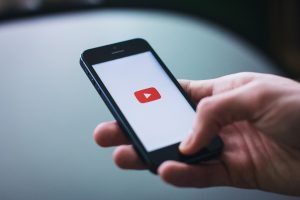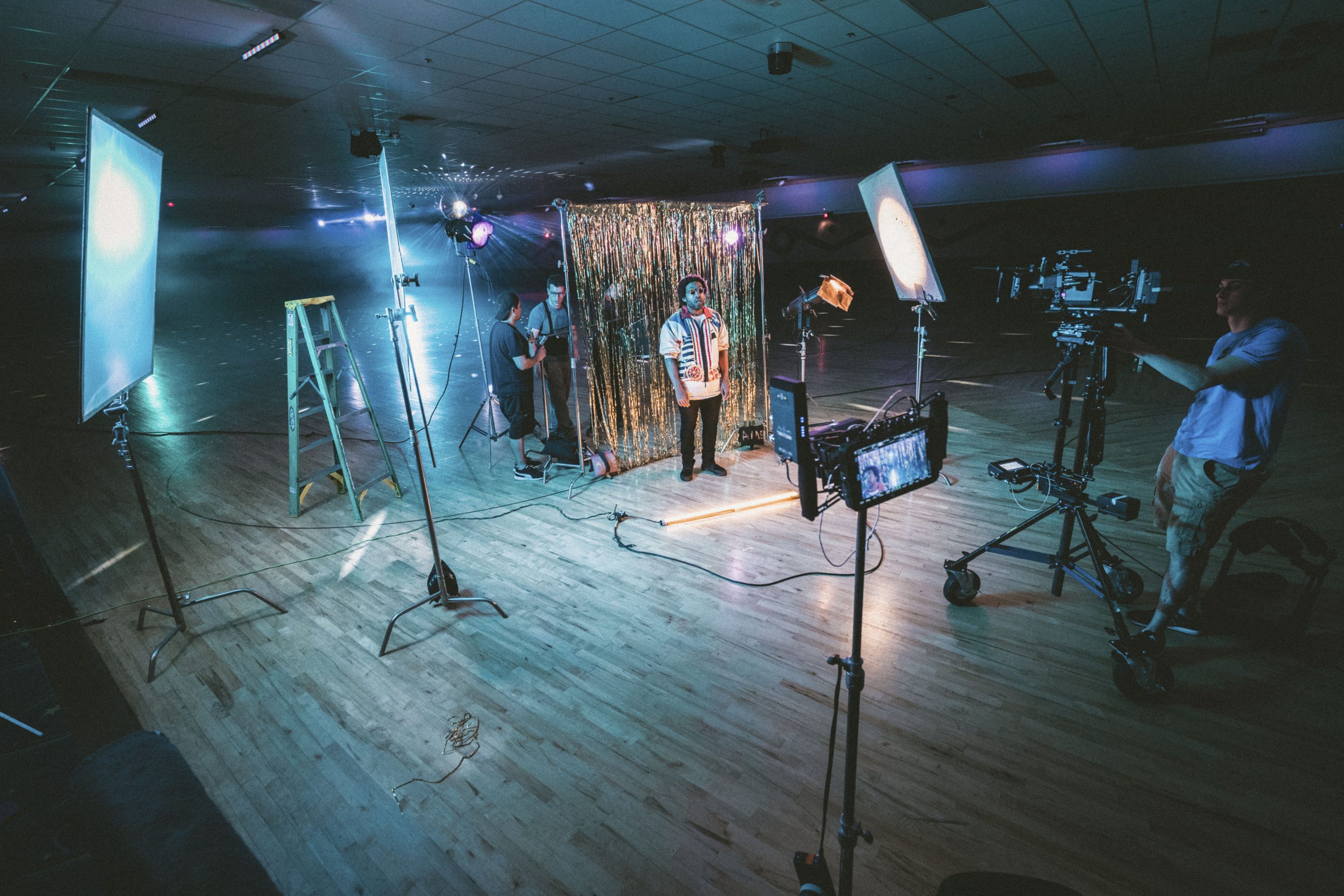During the COVID-19 pandemic, live streaming and video chat became not just convenient but critical mediums of communication and content delivery. That value continues today.
Are you live-streaming for your business? If not, it’s never too late to get started!
But before you dive headfirst into live streaming, the following are 12 tips to make your stream as professional and engaging as possible.
Choose your live-stream platform carefully
You have more options today than ever before to broadcast live. The key is to decide on the target audience of your live-stream.
Are you trying to reach as broad of an audience as possible? Consider Facebook or YouTube. Is the content you’re sharing exclusive to paying customers? There are options to make a Facebook Live more exclusive (if it’s broadcasting within a closed Facebook group) or to limit permissions on a YouTube video. You might also consider a Zoom account, for example, for access and password control as well.

You’ll also want to keep music copyright permissions in mind if music could be part of your live stream in any way. Copyrighted music can get flagged on platforms, like Facebook. Copyright, in general, is a huge consideration to be aware of.
The key is to evaluate the features of each streaming platform you’re considering and decide on one first. It might be tempting to jump on multiple platforms to reach more people but commit to mastering one live-streaming platform first before expanding.
Live-stream formatting matters
You have the option of filming horizontally or vertically when going live. Horizontal camera angles allow for more of your surroundings to be in the frame, as well as give space for interviews. Vertical camera angles are more up-close and personal for the audience.
There is a time and place for either. But to look as professional as possible, it’s best to stay consistent once you do decide on either angle. You also can set out consistent guidelines to determine if/when you would shift camera angles.
Promotion is critical
Whether you’re informing your paying customers of exclusive content or trying to reach as many potential customers as possible, you have to promote your live stream.
If a tree falls in the woods and no one is around to hear it, did it make a sound?
The same idea applies here.
There is a lot of noise out there during the COVID-19 pandemic. Everyone is trying to communicate disruption, adjustments, you name it. Not only do you have to get your message out there, but you have to cut through that noise to reach your target audience.
To cut through, ask yourself who would care and why would they care. Then, get specific about those answers in your promotion. Engaging visuals are more critical than usual. How can you catch someone’s eye? Then, don’t be afraid to over-communicate, over-post and overshare.
Granted, you’re not trying to blow up anyone’s inbox with daily promotional emails, for example, but spread your message across platforms and channels at a healthy pace starting about two weeks beforehand, perhaps even with a countdown to the day of your live stream. Everyone is dealing with a lot of digital communication, so the basic organic reach of any one post could easily be lost or forgotten. Be specific about why people should tune in, and be compelling.
Most-expensive equipment not mandatory
Don’t get us wrong. You will still want some basic live-streaming equipment depending on the premise of the live-stream itself.
But keep it simple. Usually, a computer (or even a phone), a tripod, good lighting and a mic will do. And while we don’t believe you need the most expensive of any of those items, it is recommended to have backups. A backup tripod. A backup mic. Backup cords. Backup batteries.
Depending on the nature of your setup, you can create and use a checklist to make sure everything is ready by the time you go live.
The last thing you want is to realize you should have silenced your cell phone (the simplest of things) before going live. But a cord not plugged into the right port for audio could be a worse oversight.
The stronger the WiFi, the better
Your broadband connection matters almost more than any amount of rehearsal for your live stream. The moment your video cuts out or freezes, you will lose viewers.
You can test a number of different ways depending on the platform you’re using. For instance, you can stream on Facebook Live privately on your profile. Then watch the playback. You can give a colleague or friend access to your Zoom meeting for a quick test as well.
If the broadband connection is struggling, look at any background applications running on it, such as Google Drive (or even Netflix streaming on a different device).
This is also an opportunity to test any interactive features you’re considering, such as any graphics or online polls during the broadcast. If something doesn’t work, let it go.
High traffic times could also make a strong connection trickier. During this pandemic, more people than ever before are online and even video conferencing, putting a high demand on broadband networks nationally. You can check your broadband speed at different times of day with speedtest.net to get a sense of when might be the best time to broadcast in your area.
Focus while live streaming
The idea of broadcasting anything live can cause plenty of anxiety, especially if you’re new to it. Set yourself up for success by limiting any distractions (like cell phones) and jotting down a few notes of what you want to cover in your live stream.
A loose rehearsal is fine. But try not to over-rehearse or script out your entire stream. It will come off as less authentic to your audience and potentially robotic or boring as well. Practice to the point of being comfortable at most.
Be aware of any possible background noises or any risk of shaky camera experiences as well.
Your lighting does matter. At the very least, do whatever you can to avoid being backlit. But a standing spotlight or even natural sunlight can make all the difference. If outside, try to avoid harsh sunlight. You’ll end up in the same bad-lighting distraction scenario.
Keep in mind the patterns on your clothing. Solid colors are best. Stripes, plaid or anything else that’s busy can distract viewers as well. An overall professional appearance that matches your brand and content is ideal.
It may sound cheesy, but good posture matters. Your smile matters. Exuding confidence matters. Think about your likeability and how you appear on camera.
You can monitor how your live stream is going with an additional monitor or device. This is very helpful so that you can have a sense of what your viewers are seeing. Just be sure to keep your eyes on the camera, not the monitor.
Remember, keeping your live broadcast simple and focused will help it appear more professional. Less is more in most instances.
Be responsive during your live stream
Live video is like a microcosm of what social media is all about. It enables you to interact with your audience.
Whether it’s as simple as greeting individuals as you see them join your stream or answering viewer questions during your broadcast or any other way, you want to engage with your audience naturally as much as makes sense.
Live streams differ from pre-recorded videos in this way by enabling you to build relationships with your viewers.
Viewers can join at any time
During a live stream, viewers can come and go as they please. The expectation that your entire audience will watch from beginning to end is optimistic, not realistic.
You’ll want to regularly recap, re-introduce yourself and update what’s going on during the broadcast for any new viewers just joining. You can keep it simple with: “Hi! if you’re just joining us, welcome! We’re currently talking about [topic], and we’ve just covered [previous topic].”
Consider a guest for your live stream
Live streaming can be a lot more fun with two or more people. The art of the conversation is that much more engaging than watching one person only speak.
If you’re interviewing a guest, it’s a great opportunity for true cross-promotion on both your and your guest’s channels and platforms.
Be sure to give your guest plenty of time and space to share their expertise, perspective and experience. Hold back from jumping in or cutting them off if you can.
Your live-stream title matters
Just like a book title, the title of your live-stream video can either engage or miss the opportunity to engage your target audience.
YouTube is where SEO (search engine optimization) is critical to reach more people. Everything from your title to your video tags, video description and video thumbnail can make or break your organic reach there.

Measure your results
Success often depends on your goals. But even if your first few live streams were mostly testing the waters, check in on your reach and engagement, especially on Facebook or YouTube.
Take note of what appears to be working and what doesn’t appear to be working. Could it be the amount of promotion (or lack thereof)? Timing of the stream? The content itself?
Every insight can help you improve over time.
It’s not over when the live stream ends
Archiving your live stream for on-demand access afterward makes for great content that your audience can access anytime.
You can clean up the recorded file, of course, by trimming the beginning and end if necessary.
You also can take portions of any broadcast and repurpose those snippets for use on other platforms.
A transcript can also be created after the fact for use in a blog, or the audio can be used in a podcast. The possibilities are endless.
In conclusion
In the end, the key to professional-looking live streams is to plan, test, engage and measure. Remember that this is the best way to reach your audience during the COVID-19 pandemic, but that perfection is not required for success.
You can find more helpful insight on live-streaming from YouTube as well. Plus, what is the best video platform for marketers?

